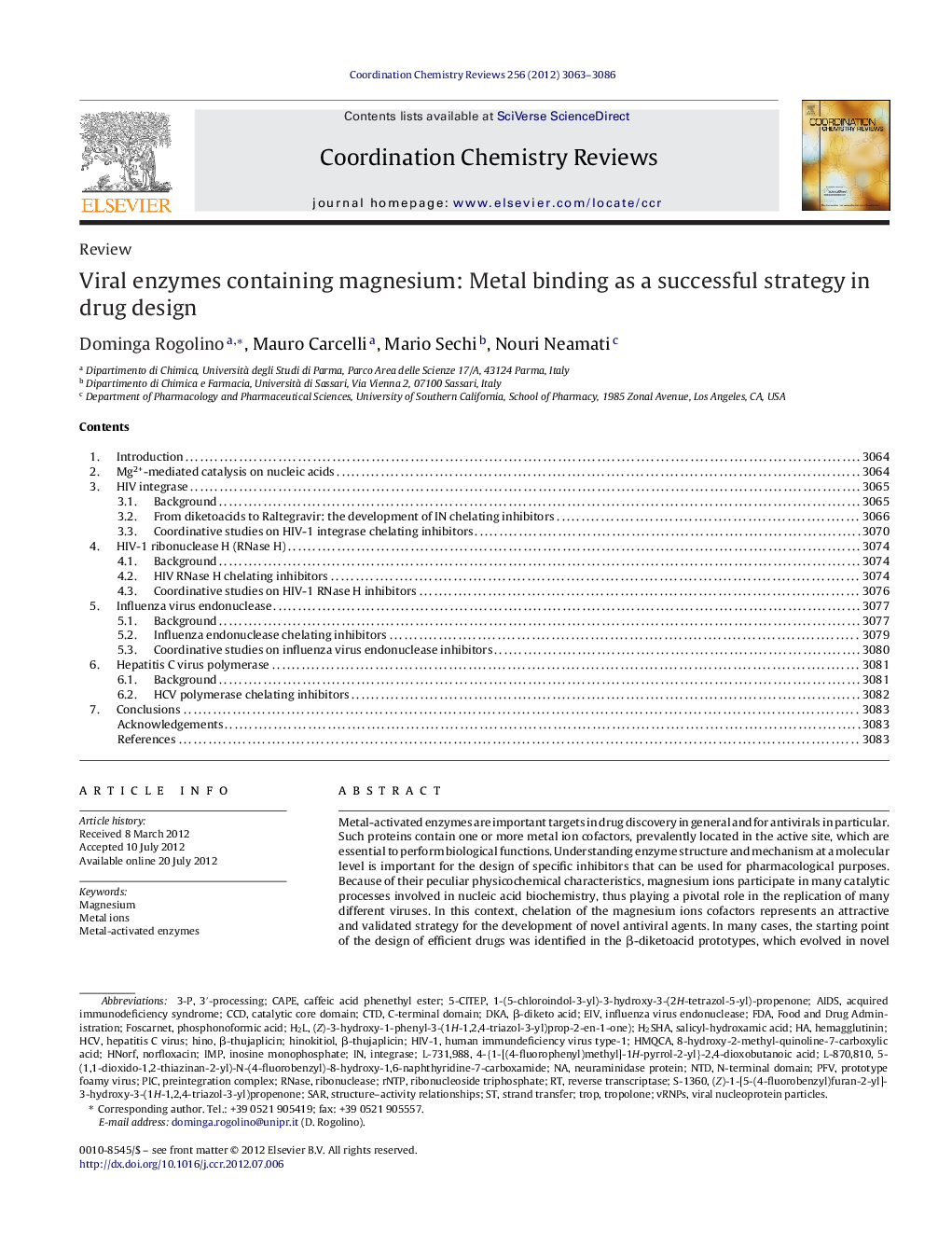| Article ID | Journal | Published Year | Pages | File Type |
|---|---|---|---|---|
| 1299120 | Coordination Chemistry Reviews | 2012 | 24 Pages |
Metal-activated enzymes are important targets in drug discovery in general and for antivirals in particular. Such proteins contain one or more metal ion cofactors, prevalently located in the active site, which are essential to perform biological functions. Understanding enzyme structure and mechanism at a molecular level is important for the design of specific inhibitors that can be used for pharmacological purposes. Because of their peculiar physicochemical characteristics, magnesium ions participate in many catalytic processes involved in nucleic acid biochemistry, thus playing a pivotal role in the replication of many different viruses. In this context, chelation of the magnesium ions cofactors represents an attractive and validated strategy for the development of novel antiviral agents. In many cases, the starting point of the design of efficient drugs was identified in the β-diketoacid prototypes, which evolved in novel chemotypes bearing various chelating motifs able to bind these divalent metal ions. The application of this strategy has allowed significant results to be achieved in recent years in the development of antiviral agents, culminating in the approval of the first HIV integrase inhibitor in 2007.This review focuses on the magnesium metal cofactors and on their catalytic and biological properties, as well as on the structural features of the most relevant metal chelating compounds developed as antiviral agents against some of the most important viral targets: human immundeficiency virus integrase, reverse transcriptase RNase H, influenza virus endonuclease, and hepatitis C virus polymerase.
► The review focuses on the bimetallic magnesium cofactors of some viral enzymes. ► HIV integrase, RNase H, influenza endonuclease, hepatitis C polymerase are considered. ► The chelation approach to the inhibition of the enzymatic activity is introduced. ► The relevant metal chelating compounds developed as antiviral agents are described. ► Coordinative studies involving chelating inhibitors are illustrated.
